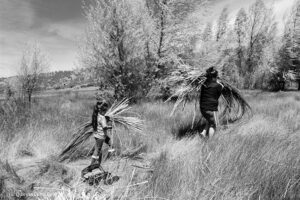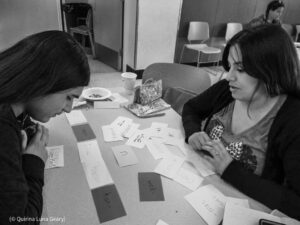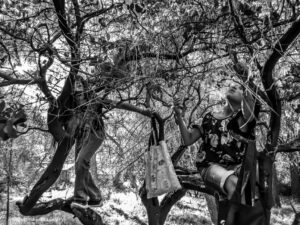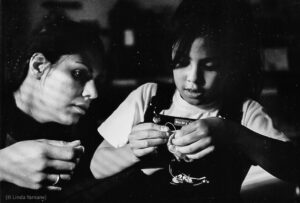Preserving one Native American tribe’s language and culture

The United States brings together many identities, languages and religions. This diversity is a core part of Americans’ identities, and many people have dedicated their lives to preserving their own cultures.
Quirina Geary is Native American. Even though she never expected her life’s work to be the preservation of Mutsun, the language of her ancestors, she says doing so has felt like coming home.
Geary is one of many Native American women across the United States working to keep their tribes’ languages alive by studying, teaching and advocating for their continued existence.
Although she was raised Native American and maintained traditional cultural practices, “one thing we didn’t have was language,” Geary says. “And language is so closely tied to identity.”
In 1996 Geary and her sister attended a workshop sponsored by the Advocates for Indigenous California Language Survival at University of California, Berkeley.

During their research at the conference, they discovered their great-great-great-grandmother worked with early 20th-century academics to preserve the Mutsun language before her death in the 1920s.
Geary says it felt like a sign she was on the right path to continue to learn more about the language and culture. “We just couldn’t believe it,” she says. “That work was gold to us.”
She began working with an academic at the University of Arizona to learn to speak and document Mutsun. Their partnership has spanned over two decades and resulted in a Mutsun-English dictionary, the first of its kind. Geary has also published children’s books in Mutsun.
Geary has taught Mutsun for years to Mutsun descendants. She says 60 students are signed up but there are 15 regulars — mostly women — who are the most committed to learning the language. “I made sure that as I was learning Mutsun, I would share the knowledge I had,” she says.

Languages lost
The United Nations (PDF, 1.4MB) says up to 90% of global Indigenous languages will disappear by the end of the 21st century and 600 languages have already disappeared since 1900.
The United States is home to countless other indigenous languages and supports all people’s rights to preserve their language and culture.
The National Indian Council on Aging says any language spoken by less than 10,000 people is in danger. Currently, there are 600 members of the Amah Mutsun tribe.
Geary cites studies demonstrating that learning indigenous languages, like Mutsun, connects people through culture, shared experience and a celebration of heritage.
“It’s not just about speaking a language,” she says. “It really is so deeply rooted in identity where when a language thrives a people thrive and good things start to happen.”


